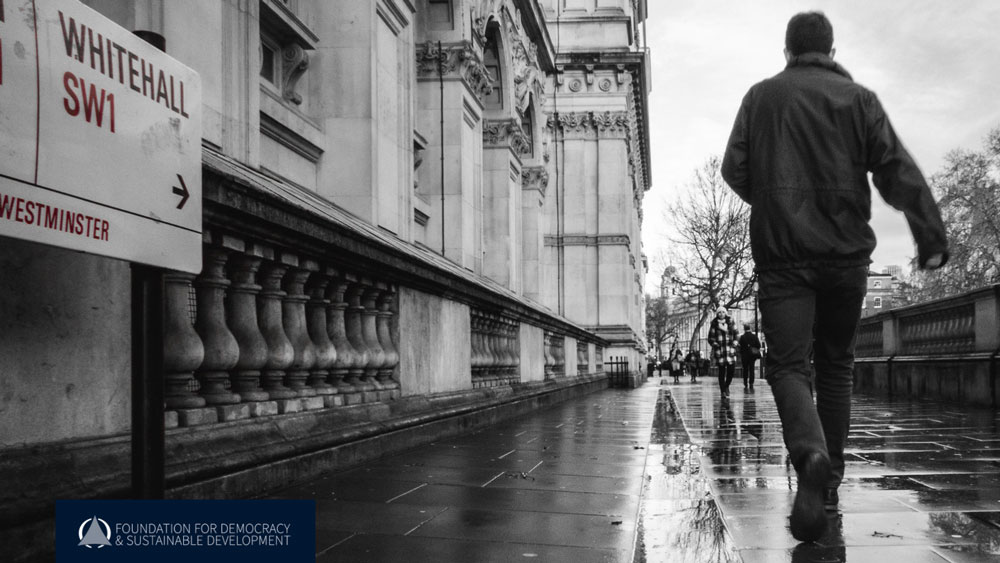
Image: (CC-NY-NC 2.0)—Chris Jones/flickr.com
Regional disparities have haunted policy makers in the UK for generations – regional economic agencies have come and gone, motorways were built to reconnect economic centres, subsidies were tried and then more market forces. But, as we emerge from the pandemic, ‘levelling up’ has come to be ‘the defining mission of this government’, according to Michael Gove. It is where the government is placing a great deal of its political capital. We even have a renamed government department, which Gove heads, to show for it – the Department for Levelling Up, Housing and Communities. And he has just published his long-awaited White Paper on the subject. This stresses the need for systems change and lays out 12 missions, which are to be cross-government, cross-society efforts.
Such systems thinking is to be welcomed – as opposed to traditional, single ministry individual initiatives in hopes that there might be a ‘silver bullet’ solution to a problem. Though the devil will be in the detail of how far different ministries and government agencies, with their own priorities and funding, may genuinely collaborate. Gove has included an annual reporting requirement in the White Paper, and a Levelling Up Advisory Council, including the development economist, Sir Paul Collier, to offer independent analysis – so a key test to come will be how effectively the government is held to account.
But there are crucial questions to assess how well the Levelling Up strategy will serve the needs and interests of future as well as present generations. In particular:
- How far will policy be truly holistic, fostering capital where it is needed in all its forms for the long term – natural, social and human capital, not just financial and physical infra-structure?
- How far will local communities be truly engaged in shaping their own futures, rather than bidding for support within tramlines laid down from a technocratic centre?
- How will the trade-offs be managed – for instance, between different places and between different social groups not simply defined by location?
- Will there be a race for quick fixes and returns to shore up political support or will the foundations be laid for sustainable change supporting the well-being of future generations?
The rhetoric from the start did go beyond a dash for growth – the levelling up initiative was trailed as a ‘real opportunity to help build the safer, greener, more prosperous and neighbourly country that we all want to see after Covid’ (UK Community Renewal Fund: prospectus 2021-22). But the White Paper confirms the early signs, given where money has already been committed and the absence of new money in addition, that a great deal is going to be devoted to old approaches rewarmed. We need to urge the government to think afresh before the White Paper becomes legislation.
In a report for New Philanthropy Capital, Tom Collinge and Leah Davis estimated where the majority of the new funding announced will go – of £5.17bn, they reckon up to £4.48bn, 87%, could go on capital investment over four years, mostly traditional infra-structure projects, albeit including funding for new parks. Parks and some new initiatives in education and skills aside, the investment in natural, social and human capital, necessary for sustainable, longer-term development, looks set to be comparatively neglected. The last budget offered some new spending pledges and an indication where the money might go. For instance, among the larger pledges, there is a garden village in South Derby, improvement to harbours and vessels on the Scilly Isles, and improved transport links in Renfrewshire and Liverpool. These are potentially important projects, but in conceptual terms they could date from 100 years ago.
The White Paper has added the ‘Boris Boroughs’, 20 regeneration zones starting with Wolverhampton and Sheffield, ‘undertaking ambitious, King’s Cross-style regeneration projects, transforming derelict urban sites into beautiful communities’. There will be a £1.5 billion Brownfield fund to support this, and additionally £120 million available to seven Mayoral Combined Authorities to build homes on brownfield sites. But the overall cost of King’s Cross was £3 billion – the government sold its stake for £371 million – which dwarfs the funds available for the 20 regeneration zones, and the location of Kings Cross attracted the likes of Facebook and Google. And there is debate how far the gentrification which the Kings Cross project represents could or should be replicated, given the way it increased inequalities leaving neighbouring communities and people on low incomes behind.
Looking at determining how the money should be spent, the government has stated its intention to empower local areas (Build back better – our plan for growth.) And this has emerged as a key emphasis in the White Paper which has announced a ‘devolution revolution’. Nine areas have been invited to begin negotiations to become Mayoral Combined Authorities (MCAs), along the lines of Greater Manchester or the West Midlands. And a new devolution framework will be put in place to allow areas to select from a menu of options ‘whether that is moving towards a London-style transport system to connect people to opportunity, improving local skills provision, or being able to act more flexibly and innovatively to respond to local need’. And ‘the £2.6 billion UK Shared Prosperity Fund will be decentralised to local leaders as far as possible’. This is a welcome move to decentralize decision making out of Whitehall, closer to communities. But it only goes a small part of the way, and past experience suggests there may be serious hurdles to cross, as was evident in 2004 when the North East overwhelmingly rejected plans for a regional assembly. There are also reasons why George Osborne’s original devolution revolution in 2015 got so far and no further. The most successful MCAs to date have been based on relatively cohesive geographic and economic areas – the same does not look likely for the nine regions now announced, far more heterogeneous mixes of communities and needs, both urban and rural. To go further, to ensure this will not just add another layer of quite remote authority, mechanisms need to be developed to effectively engage local communities to determine what they need in levelling up for now and for the future. The election cycle is not enough in itself – when local needs are neglected, that can just result in low voter turn-out and further disaffection.
Despite the promise to devolve some spending, the majority of funds for levelling up will be open to a bidding process, in a way which has become traditional. But a bidding scheme is not the same as engagement. It maintains power at the centre, which sets the terms, rather than co-creating those terms with local democratic institutions, stakeholders and local communities. A bidding process also neglects that many of the areas which these funds are supposed to help do not have the resources, capacities and connections to assemble the most effective bids. There are alternative models to be built on – such as have been developed in participatory budgeting, for instance – which could ensure that local development is tuned to local needs and empowers local people to share in determining their own futures.
As well as maintaining a technocratic emphasis rather than co-creation, there appears to be an uncertain sense of geography behind government proposals. The politics around Brexit revealed deep dissatisfactions of North against South, and towns against cities. Those are clearly being addressed in the levelling up proposals but inequalities can be substantial within regions and towns, not just between them. For instance, Chelmsley Wood is a deprived area within the Metropolitan Borough of Solihull. It is estimated that life expectancy for men in Chelmsley Wood is more than ten years less than the more affluent parts of Solihull. Healthy Life Expectancy is rightly one of the 12 missions in the White Paper. But Chelmsley Wood is not one of the areas eligible for funding, there is no clear plan for levelling up there.
Much of the dynamic in levelling up comes from political drivers, of course, rather than from assessments of need or engagement with communities. The government has to retain the loyalties of the old Red Wall constituencies if it is to maintain its majority. That has not led at this point simply to pork barrel projects, but it has put a premium on visible and speedy change, and even that, despite the political dynamics, could in turn be vulnerable as the Chancellor turns his attention to paying the bills from Covid. A new form of politics, built around engagement and the balanced, iterative investment in natural, social and human capital to support wellbeing now and for future generations, could serve the government well in signalling that there are not swathes of the national community any longer ignored and that there is a project worth pursuing on into the coming generation beyond the next general election. The White Paper is a start, but there are still too many ways in which it is stuck in the past rather than preparing the way for future generations.
Download
The full provocation by John Lotherington is available for download in pdf.



